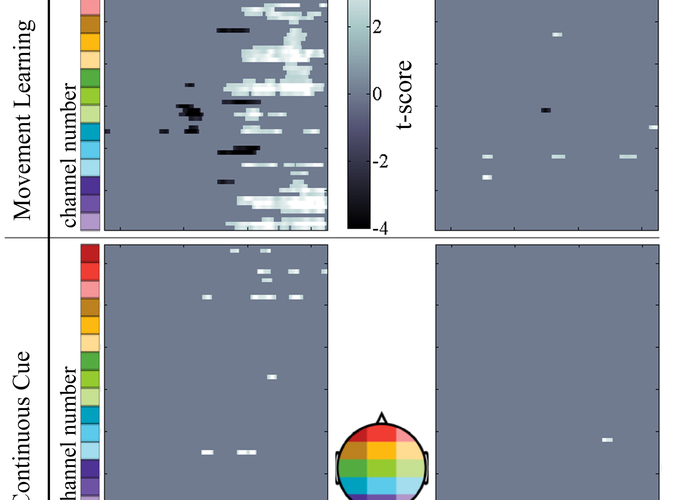Exploring the unknown: electrophysiological and behavioural measures of visuospatial learning
Abstract
Visuospatial memory describes our ability to temporarily store and manipulate visual and spatial information and is employed for a wide variety of complex cognitive tasks. Here a visuospatial learning task requiring fine motor control is employed to investigate visuospatial learning in a group of typically developing adults. Electrophysiological and behavioural data is collected during a target location task under two experimental conditions, Target Learning and Target Cued. Movement times are employed as a behavioural metric of performance while dynamic P3b amplitudes and power in the alpha band (approximately 10 Hz) are explored as electrophysiological metrics during visuospatial learning. Results demonstrate that task performance, as measured by movement time, is highly correlated with P3b amplitude and alpha power at a consecutive trial level (trials 1 - 30). The current set of results, in conjunction with the existing literature, suggests that changes in P3b amplitude and alpha power could correspond to different aspects of the learning process. Here it is hypothesized that changes in P3b correspond to a diminishing inter-stimulus-interval and reduced stimulus relevance while the corresponding changes in alpha power represent an automation of response as habituation occurs in participants. The novel analysis presented in the current study demonstrates how gradual electrophysiological changes can be tracked during the visuospatial learning process under the current paradigm.
